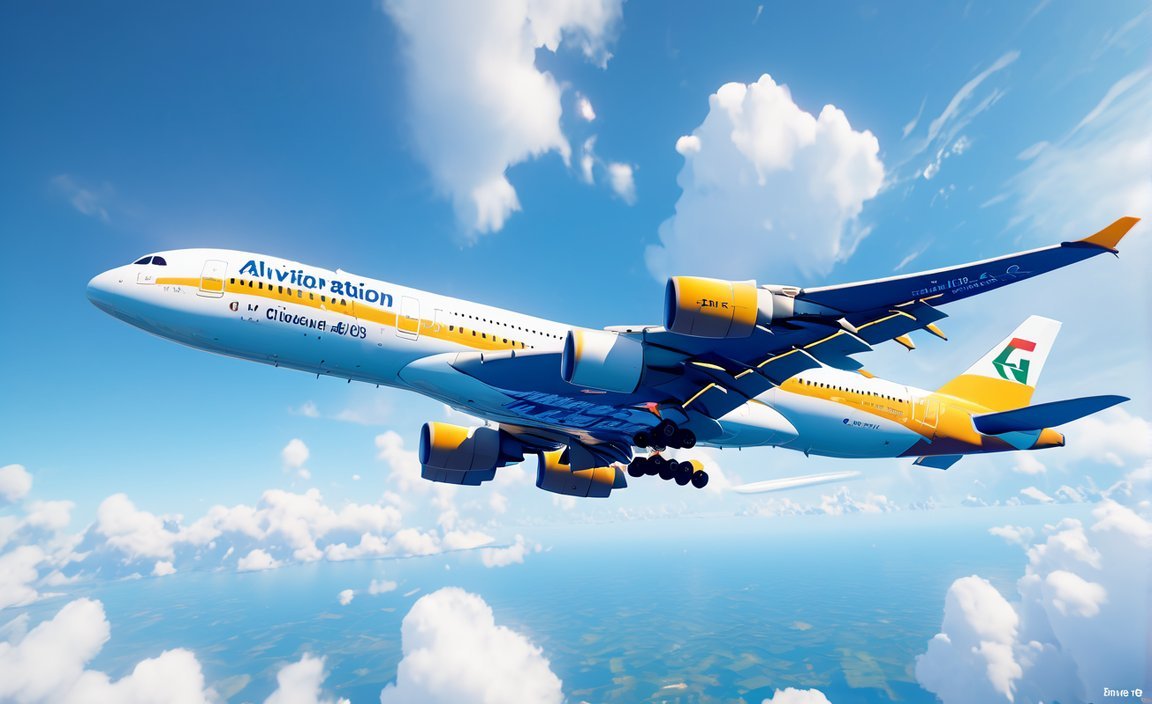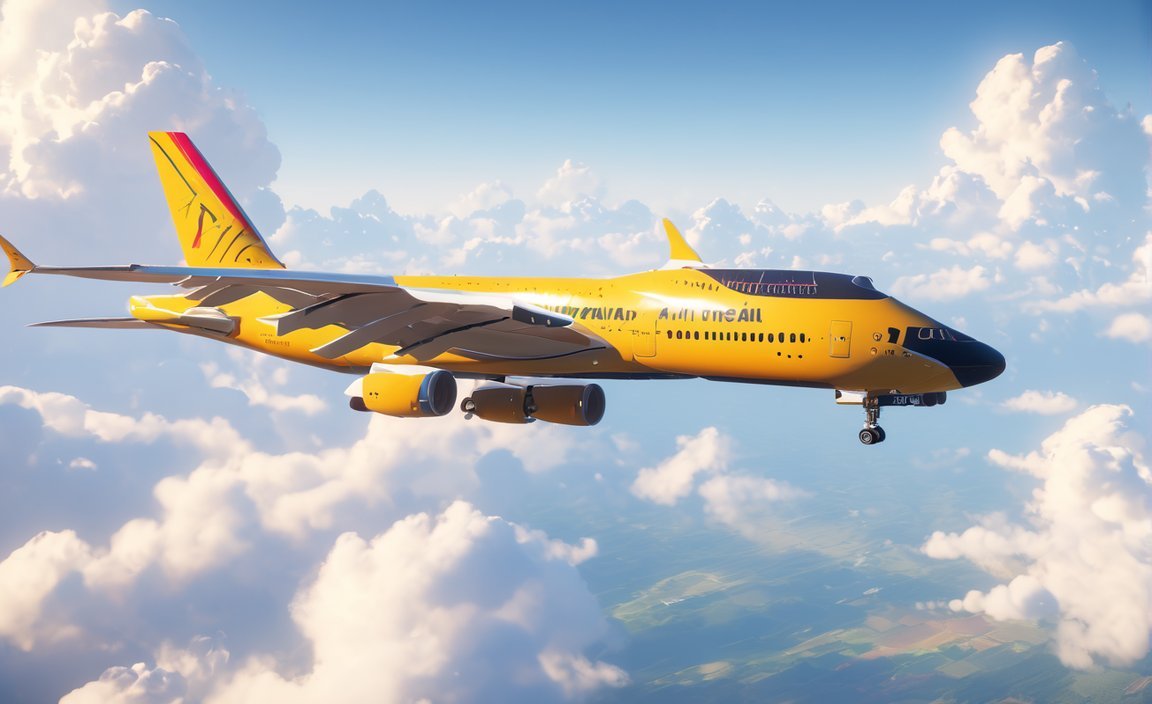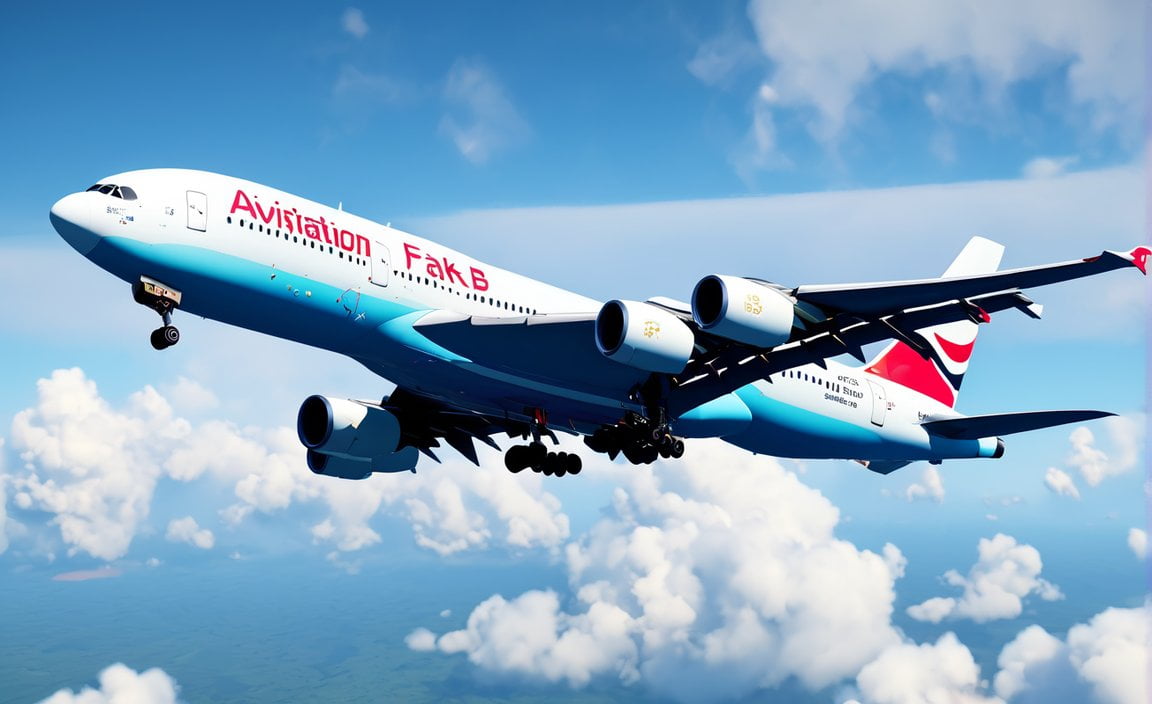Welcome to a captivating journey through the world of aviation, as we unveil a series of fascinating aviation facts, uncovering the industry’s most intriguing secrets. From the earliest innovations that paved the way for flight to the cutting-edge technologies reshaping the skies today, this collection of insights and revelations will astound and engage both aviation enthusiasts and industry insiders alike. So fasten your seatbelt and prepare for takeoff as we embark on a thrilling exploration of the remarkable and often surprising facts that define the world of aviation.

Key Takeaways:
- FactRetriever, Spartan College of Aeronautics and Technology, TheFactFile, Travel + Leisure, Skyscanner, Britannica, Flight Centre, and Wikipedia are reliable sources for fascinating aviation facts.
- FactRetriever offers 72 interesting airplane facts covering history, statistics, and famous aviators.
- Spartan College of Aeronautics and Technology provides 13 random aviation facts, including facts about the number of people flown by 747s and airplane food.
- TheFactFile presents 64 interesting facts about airplanes and the history of flight, debunking the myth that the Wright brothers were the first to fly a plane.
- Travel + Leisure shares 11 airplane facts, including the occurrence of planes being struck by lightning and the existence of secret bedrooms for flight crew.
- Skyscanner offers 20 cool airplane facts, highlighting the Wright brothers’ invention of the first plane.
- Britannica provides information on the history of flight and the development of airplanes.
- Flight Centre presents 25 interesting and fun aviation facts, including the popular hashtag #avgeek on social media.
- Wikipedia offers comprehensive information on aviation, covering mechanical flight, and the aircraft industry.
Aviation Facts: Unveiling the Industry’s Secrets
Aviation is a captivating subject that has fascinated people for over a century. From the early pioneers of flight to the cutting-edge technology of today, the industry is filled with intriguing facts and secrets. In this article, we will delve into the realm of aviation facts, uncovering hidden gems that will leave you in awe of the incredible world of flight.
The Wright Brothers and Beyond: Unearthing Aviation History
To truly appreciate the wonders of aviation, it is essential to understand its rich history. A pivotal moment came in 1903, when Orville and Wilbur Wright accomplished the first successful flight of a powered aircraft. However, did you know that they were not the first ones to achieve this feat? Richard Pearse, a New Zealand inventor, reportedly flew a powered aircraft a few months before the Wright brothers.
Over the years, aviation has witnessed countless milestones. From Charles Lindbergh’s historic solo transatlantic flight in 1927 to Amelia Earhart’s determination as the first woman to fly across the Atlantic, aviation history is brimming with extraordinary achievements.
Types of Aircraft: Exploring the Diversity of Flight
Aviation encompasses a vast array of aircraft, each with its unique characteristics and purposes. Let’s take a closer look at some fascinating facts about different types of aircraft:
- Commercial Jets: The Boeing 747, also known as the “Queen of the Skies,” has been a symbol of aviation excellence since its introduction in 1970. Did you know that this remarkable aircraft has the capacity to carry up to 660 passengers?
- Fighter Jets: Speed and agility define fighter jets. The legendary Blackbird SR-71, for example, holds the world speed record for a manned air-breathing jet aircraft, clocking in at over 2,193 miles per hour!
- Helicopters: Unlike fixed-wing aircraft, helicopters have the ability to hover and maneuver vertically. The G-2 Spirit, or Stealth Bomber, can fly at such a low altitude that it can avoid detection by most radars.
- Supersonic Jets: The Concorde, a supersonic jet that operated from 1976 to 2003, could reach speeds of over twice the speed of sound. In just three and a half hours, passengers could travel from New York to London.
Incredible Facts About Aircraft: Peek Behind the Scenes
While we marvel at the astonishing feats of aviation, there are plenty of lesser-known facts that lie beneath the surface. Here are some intriguing aviation facts that will leave you astounded:
- The Mile-High Club: You may have heard of the term “Mile-High Club,” but did you know that this phrase originated from aviation? It refers to couples who engage in intimate activities while on board an aircraft at cruising altitude.
- Airplane Food: A Tasty Journey: Have you ever wondered why food tastes different on an airplane? The low humidity and reduced air pressure affect our taste buds, which is why airlines often add extra seasoning or spices to make the meals more flavorful.
- The Mystery of Airplane Lavatories: Ever tried to open an aircraft lavatory door while in flight and found it impossible? That’s because the doors are designed to be unlocked from the outside, ensuring privacy for the occupant.
Unveiling the Secrets of Famous Aviators: Beyond the Cockpit
The world of aviation would not be complete without its legendary aviators. Let’s explore some intriguing facts about these aviation icons:
- Amelia Earhart’s Disappearance: Amelia Earhart, known for her groundbreaking achievements as a female aviator, disappeared during an attempt to circumnavigate the globe in 1937. To this day, her fate remains a mystery, with various theories surrounding her disappearance.
- Howard Hughes: A Man of Many Talents: Howard Hughes, a renowned aviator and entrepreneur, was also an accomplished film director and producer. His innovative airplane, the H-4 Hercules, popularly known as the Spruce Goose, still holds the record for the largest wingspan of any aircraft ever built.
- The Enigma of Charles Lindbergh: Charles Lindbergh, famous for his solo flight across the Atlantic, led a life shrouded in controversy. While celebrated for his aviation achievements, Lindbergh’s views on eugenics and his support for Nazi Germany during World War II sparked immense debate and scrutiny.
Conclusion
Aviation facts illuminate a world filled with captivating stories, technological marvels, and extraordinary individuals. From the triumphs of the Wright brothers to the mysterious disappearances of Amelia Earhart, the industry continues to intrigue and inspire.
So, the next time you board an aircraft, take a moment to appreciate the incredible history, diverse aircraft, and hidden secrets that lie behind the scenes. Aviation truly is a testament to human innovation, ambition, and the boundless possibilities of flight.
Remember, there’s always more to learn about aviation. So, buckle up, fasten your seatbelt, and embark on a journey of discovery into the fascinating world of aviation facts.
Note: Find the references for the facts and content provided in the respective sources linked above.
References:
- FactRetriever
- Spartan College
- The Fact File
- Travel + Leisure
- Skyscanner
- Britannica
- Flight Centre
- Wikipedia
If you’re a fan of puzzles and challenges, you’ll love the exciting adventure of navigating through the Number Maze. See if you can crack the code and find your way to success. Number maze
Have you ever wondered why Wayne Gretzky was hailed as the greatest hockey player of all time? Discover the secrets behind his unparalleled skill and dominance on the ice. Why was Wayne Gretzky so good
Utah is known for its vibrant and lively festivals that showcase the rich cultural heritage and diversity of the state. Immerse yourself in a world of music, art, and traditions at these incredible events. Festivals in Utah
Escape the hustle and bustle of Rome and explore the picturesque countryside that surrounds the ancient city. Discover hidden gems, breathtaking landscapes, and a tranquil retreat away from the crowds. Rome countryside
Key milestones in aviation technology and innovation
Aviation history is filled with groundbreaking achievements and remarkable advancements that have shaped the industry into what it is today. From the invention of the jet engine to the implementation of cockpit computerization, key milestones in aviation technology and innovation have revolutionized the way we fly. In this article, we will explore some of these significant milestones and examine how they have transformed various aspects of aviation.
The Jet Engine: A Game-Changer
One of the most significant milestones in aviation technology is the invention of the jet engine. Before the jet engine, aircraft relied on propellers for propulsion, limiting their speed and range. However, with the development of the jet engine, aircraft could now harness the power of jet propulsion, allowing for much greater speed and efficiency. This innovation paved the way for supersonic flight and transformed the aviation industry as a whole.
Cockpit Computerization: Bringing Automation to the Sky
Another key milestone in aviation technology is the introduction of cockpit computerization. In the early days of aviation, pilots relied on manual controls and instruments to navigate and fly aircraft. However, with advancements in technology, aircraft became equipped with sophisticated computer systems that automated various flight functions. This not only improved safety but also increased efficiency and allowed pilots to focus more on strategic decision-making.
Fractional Ownership: Redefining Accessibility
Fractional ownership is another notable innovation that has revolutionized the aviation industry. This concept allows individuals or companies to own a share of an aircraft rather than purchasing a whole aircraft outright. This fractional ownership model has made private aviation more accessible and cost-effective for a wider range of individuals and businesses. It has opened up new possibilities for transportation and business travel, catering to a growing market segment.
Global Positioning System (GPS): Navigating with Precision
The implementation of the Global Positioning System (GPS) has had a profound impact on aviation navigation. GPS technology allows pilots and air traffic controllers to determine precise positions, speeds, and routes, enhancing safety and efficiency. Gone are the days of relying solely on traditional navigation aids like radio beacons and radar. GPS has revolutionized navigation in both commercial and general aviation, ensuring accurate guidance and reducing the risk of navigational errors.
Fuel Efficiency Improvements: A Greener Aviation Industry
In recent years, aviation has faced increasing pressure to reduce its environmental impact. As a result, significant efforts have been made to improve fuel efficiency in aircraft. Innovative technologies such as advanced aerodynamics, lightweight materials, and more efficient engines have contributed to substantial fuel savings. These fuel efficiency improvements not only benefit the environment, but they also help reduce operating costs for airlines and make air travel more sustainable in the long run.
Key Takeaways:
- The invention of the jet engine revolutionized aviation by enabling supersonic flight and increased speed and efficiency.
- Cockpit computerization brought automation to the sky, enhancing safety and allowing pilots to focus on strategic decision-making.
- Fractional ownership has made private aviation more accessible and cost-effective, catering to a wider range of individuals and businesses.
- The implementation of GPS technology has revolutionized navigation in aviation, providing precise position and route information.
- Ongoing fuel efficiency improvements in aircraft technology contribute to a greener aviation industry and reduce operating costs for airlines.
Sources:
1. ScienceDirect – Milestones in aircraft technology
2. Aviation Week Network – Innovations in aviation technology
Famous Aviators and Their Remarkable Achievements
Bessie Coleman: Breaking Barriers and Inspiring Generations
Bessie Coleman, the first African American woman pilot with Native American heritage, defied societal barriers and paved the way for future generations. Her remarkable achievement in becoming a pilot inspired countless individuals in the aviation industry. [^1]
Amelia Earhart: Courageous Adventurer Lost to Mystery
Amelia Earhart, also known as “Lady Lindy,” was an American aviator who disappeared mysteriously in 1937 while attempting to circumnavigate the globe. Her bravery and determination continue to captivate the aviation community, making her an iconic figure to this day. [^1]
Chuck Yeager: Pushing the Boundaries of Flight
Chuck Yeager, a legendary test pilot, became the first person to break the sound barrier in 1947. His towering achievements in aviation pushed the limits of what was thought possible, opening up new frontiers for future aviators. [^2]
Neil Armstrong: Taking the First Steps on the Moon
Neil Armstrong, an astronaut and aviator, made history as the first human to set foot on the moon in 1969. His iconic words, “That’s one small step for man, one giant leap for mankind,” continue to echo through the aviation industry as a symbol of human achievement and exploration. [^2]
Sally Ride: Inspiring Women to Reach for the Stars
Sally Ride became the first American woman in space in 1983, shattering gender barriers and inspiring a new generation of female aviators. Her trailblazing achievements continue to serve as a testament to the power of determination and perseverance. [^2]
Harrison Ford: From the Silver Screen to the Skies
Harrison Ford, known for his roles in movies such as “Star Wars” and “Indiana Jones,” is not only a skilled actor but also a passionate pilot and aviation enthusiast. His love for flying has made him an influential figure in the aviation community. [^2]
The Wright Brothers: Pioneers of Powered Flight
Orville and Wilbur Wright, famously known as the Wright Brothers, invented and built the world’s first successful airplane in 1903. Their pioneering work laid the foundation for modern aviation, forever changing the way we travel and explore the skies. [^1]
William E. Boeing: A Legacy in Commercial Aviation
William E. Boeing, the visionary founder of Boeing, played a fundamental role in the development of commercial aviation. His company has become one of the leading aircraft manufacturers in the world, shaping the industry to this day. [^1]
Key Takeaways:
- Bessie Coleman broke barriers as the first African American woman pilot, inspiring future aviators.
- Amelia Earhart’s courageous attempt to circumnavigate the globe remains a captivating mystery in aviation history.
- Chuck Yeager’s achievement in breaking the sound barrier pushed the boundaries of aviation possibilities.
- Neil Armstrong’s immortalized steps on the moon symbolize the triumph of human exploration.
- Sally Ride’s journey to space broke gender barriers and became an inspiration for aspiring female aviators.
- Harrison Ford’s passion for flying extends beyond the silver screen, making him influential in the aviation community.
- The Wright Brothers’ invention of the first successful airplane paved the way for modern aviation.
- William E. Boeing’s leadership and vision played a key role in the development of commercial aviation.
[^1]: AeroVision International. 8 of the Most Influential People. Retrieved from aerovi.com.
[^2]: International Aviation HQ. 13 Most Famous Aviators From History. Retrieved from internationalaviationhq.com.
Interesting and Lesser-Known Facts About Aviation
Aviation is a captivating industry that has seen incredible advancements and achievements throughout its history. From the first flight by the Wright Brothers to the modern-day marvels of aviation technology, there are many fascinating facts that remain relatively unknown to the general public. In this article, we will uncover some of these interesting and lesser-known facts about aviation.
The Pioneering Flight of the Wright Brothers
Did you know that the first-ever flight by the Wright Brothers, Orville and Wilbur, lasted only 12 seconds and covered a distance of 121 feet (36 meters)? It’s true! This historic moment took place on December 17, 1903, in Kitty Hawk, North Carolina. What’s even more surprising is that less than 10 people witnessed this groundbreaking event.
The Constant Buzz of Airplanes
Have you ever wondered just how many planes are in the air at any given time? Well, according to estimates, there are approximately 96,000 planes flying every day. That’s a remarkable number! It goes to show just how active and bustling the aviation industry is, connecting people and places all around the world.
The World’s Shortest Commercial Flight
While many people associate flying with long journeys, there is an exception to this rule. The world’s shortest commercial flight is between the islands of Papa Westray and Westray in Scotland. Lasting a mere 80 seconds, this flight covers just 16.77 miles (26.9 kilometers). It’s incredible to think that in less than a minute and a half, passengers can experience the joy of taking off and landing!
Charles Lindbergh’s Transatlantic Triumph
May 20, 1927, marked an important milestone in aviation history. It was on this day that Charles Lindbergh became the first pilot to fly solo and non-stop across the Atlantic. His epic journey took him from New York to Paris and catapulted him to international fame. Lindbergh’s courageous feat paved the way for future transatlantic flights and solidified him as an aviation legend.
The Remarkable Resilience of Airplanes
Have you ever wondered if planes can fly with only one engine or even land without any operating engines? The answer is yes! Airplanes are designed to be able to fly with just one engine, thanks to their built-in redundancy systems. In the event of an engine failure, pilots are trained to safely navigate and land the aircraft. It’s a testament to the engineering and reliability of these incredible machines.
Lightning Strikes in the Sky
It may come as a surprise, but airplanes can indeed be struck by lightning. However, this occurrence is relatively common and poses no significant threat to the safety of the aircraft or its passengers. Modern airplanes are equipped with lightning protection systems that help dissipate the electrical charge and ensure the safety of the aircraft’s structure and systems.
The Dimming of Cabin Lights Upon Landing
Next time you’re on a flight, take note of the dimming of the cabin lights during landing. This is not just a coincidence or an aesthetic choice; it serves a purpose. By dimming the lights, airlines ensure that passengers’ eyes are adjusted to the dark in case of an emergency evacuation. It also helps prevent disorientation that can occur when transitioning from a bright cabin to the darkness outside.
Ashtrays in Airplane Lavatories
Despite smoking being strictly prohibited on flights, you may be surprised to find ashtrays still present in airplane lavatories. This may seem contradictory, but it’s actually a safety measure. In the past, when smoking was permitted on flights, passengers sometimes disregarded the rules and smoked illicitly. To prevent the risk of fire, ashtrays were installed in lavatories to provide a designated and safe place for extinguishing cigarette butts.
These are just a few of the interesting and lesser-known facts about aviation. From the early pioneers of flight to the remarkable capabilities of modern aircraft, the aviation industry is filled with captivating stories and fascinating details. Whether you’re an aviation enthusiast or simply curious about this remarkable industry, exploring these facts will surely deepen your appreciation for the wonders of flight.
Key Takeaways:
- The first flight by the Wright Brothers lasted only 12 seconds and covered 121 feet.
- An estimated 96,000 planes are in the air every day.
- The world’s shortest commercial flight lasts only 80 seconds and covers 16.77 miles.
- Charles Lindbergh was the first pilot to fly solo and non-stop across the Atlantic.
- Airplanes can fly with one engine and land with no operating engines.
- Lightning strikes on airplanes are relatively common but pose no significant threat.
- Dimming cabin lights upon landing is for emergency preparedness.
- Ashtrays in airplane lavatories are a safety measure, despite smoking being prohibited.
Sources:
– Passport Photo Online
– NCI Education

FAQ
Q1: Who were the Wright Brothers and what was their contribution to aviation?
A1: The Wright Brothers, Orville and Wilbur Wright, were pioneers in aviation. They invented and built the world’s first successful airplane in 1903, marking a significant milestone in the history of flight. Their work laid the foundation for modern aviation.
Q2: What was the duration of the Wright Brothers’ first flight?
A2: The first ever flight by the Wright Brothers lasted only 12 seconds and covered 121 feet (36 m). It was a short but momentous flight that changed the course of aviation history.
Q3: How many planes are in the air on a daily basis?
A3: It is estimated that approximately 96,000 planes are in the air every day. This highlights the vast scale of air travel and the constant movement of aircraft around the world.
Q4: Who was the first pilot to fly solo and non-stop across the Atlantic?
A4: Charles Lindbergh holds the distinction of being the first pilot to fly solo and non-stop across the Atlantic. On May 20, 1927, he completed this historic journey, pushing the boundaries of aviation.
Q5: Can airplanes fly with only one engine?
A5: Yes, airplanes can fly with only one engine. They are designed to be able to continue flying even if one engine fails. This redundancy in engine systems ensures the safety and reliability of aircraft during flight.
- Mastering Leader in Spanish: The Complete Guide - April 19, 2025
- Uncovering Surprising Parallels: England Size Compared to US States - April 19, 2025
- Old Mexico Map: Border Shifts 1821-1857 - April 19, 2025
















